Temple Facts
- Date: Late 12th or early 13th century
- Religion: Buddhism (although it was later modified)
- Built By: Jayavarman VII
- Dedicated To: Buddha
- Style: Bayon
- Best Time to Visit: Anytime
- Length of Visit: 30 minutes to 2 hours
- Temple Pass: Required (included in the Angkor Wat pass)
Location
Bayon temple is located in the centre of the ancient city of Angkor Thom. Just a few kilometres from Angkor Wat, Bayon is easily accessible.
Other nearby temples include Baphuon, Phimeanakas, Terrace of the Elephants, and some smaller temples such as South Khleang and Sour Prat Tower.
Check the below Google Maps to see the location of Bayon Temple:
Getting There
If you are coming from Siem Reap town or Angkor Wat, it’s likely that you’ll enter Angkor Thom by the South Gate. Continue heading north for about 1km and you’ll reach Bayon.
The temple is popular and included on most tours of Angkor Wat. You’ll see many tuk tuks, taxis, minivans, and other modes of transport waiting around the temple. It’s also possible to cycle here, even for the most inexperienced cyclist.
Bayon Temple Dress Code
As the temples of Angkor represent a sacred religious site to the Khmer people, visitors are asked to dress modestly.
Appropriate attire when visiting temples at Bayon Temple is long pants (covering the knee) and shirts that cover shoulders. Skirts, small shorts, tank tops, and other items of revealing clothing are not allowed within temple grounds. Visitors can and are frequently turned away from temples when wearing revealing clothing.
It is not possible to visit the highest level of Bayon Temple without upper arms covered and shorts to the knees. Local authorities have visitor 'code of conduct' guidelines and a video to encourage appropriate dress, as well as reminding tourists not to touch, sit or climb on the ancient structures, to pay attention to restricted areas, and to be respectful of monks.
Bayon Temple Tours
The Bayon temple is featured on many tours including the popular Angkor Wat Small Circuit Tour. You can’t take a trip to Angkor without seeing Bayon and it’s usually included in the “big three” which consists of Angkor Wat, Bayon, and Ta Prohm temple.
You might also want to consider the Angkor Thom Tour, Angkor Wat Sunset Tour, or the Angkor Wat Sunrise Tour.
If you’re part of a tour group, choose a tour which gives you plenty of time to explore. You’ll love getting lost in the passages of Bayon. If you’re making your own way around the temples, give yourself one or two hours to explore.
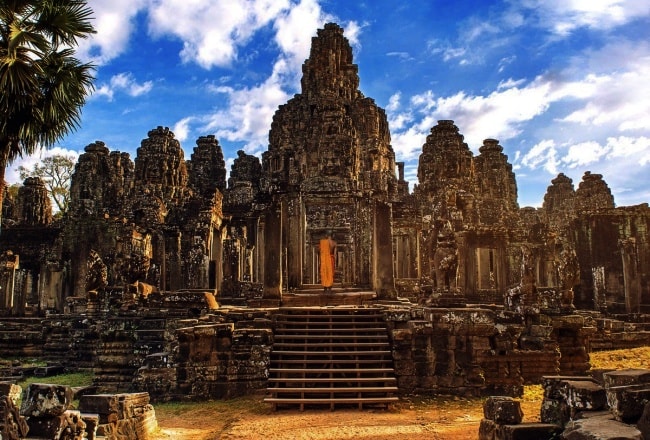
Accommodation
You’ll find many hotels in Siem Reap bearing the same name as Bayon temple, but they aren’t anywhere near the temple. Most guests will find accommodation in Siem Reap and take the short journey to visit the temple.
Here is our travel guide for Siem Reap
Why Visit Bayon?
No visit to Angkor is complete without seeing the famous faces of Bayon temple. You’ll see them everywhere around town, on the TV, in photos, and more. You should go to see them in person.
You can explore the three tiers, gaze up to the faces looking back down at you, and imagine what it would have looked like back in the day.
There are an impressive number of bas-reliefs and carvings which show scenes of the Khmer armies, apsaras, naval battles, fishermen, cockfights, and many other things.
There are photo opportunities around nearly every corner. However, Bayon is a very busy place to visit. If you want to escape the crowds, you might want to see Bayon very early in the morning or make it the last visit late in the afternoon.
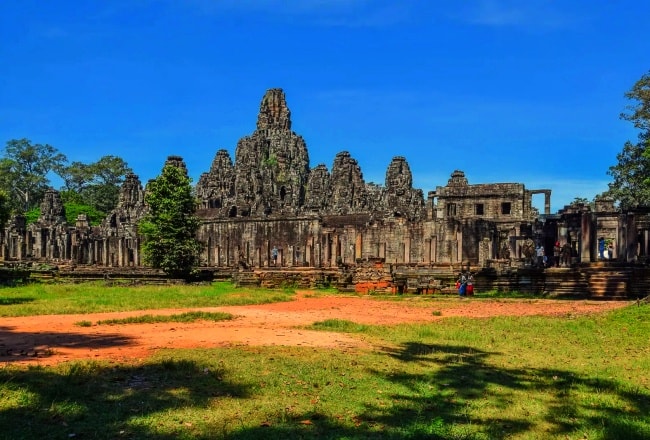


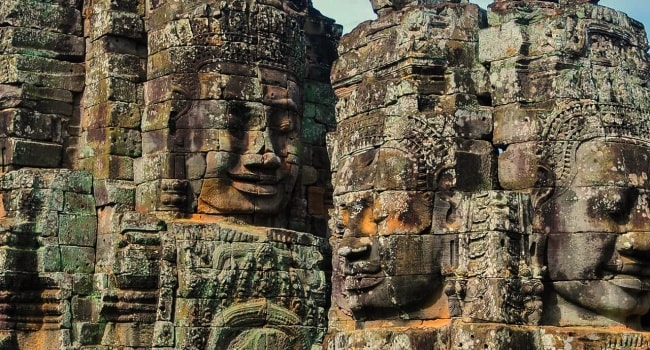

 27/12/2025
27/12/2025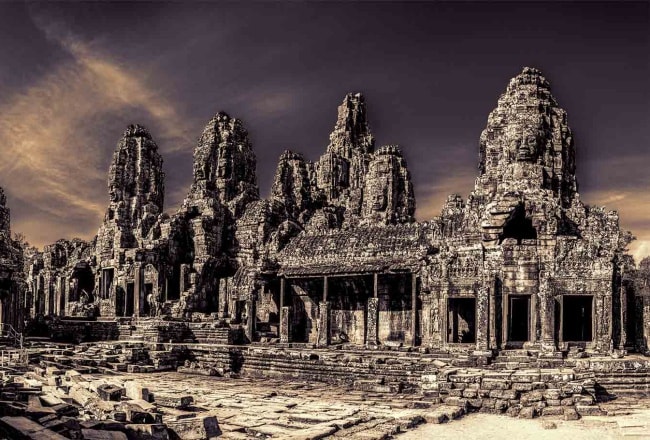
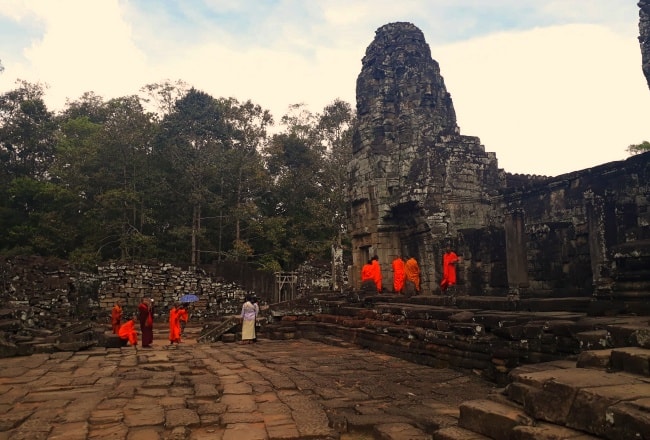
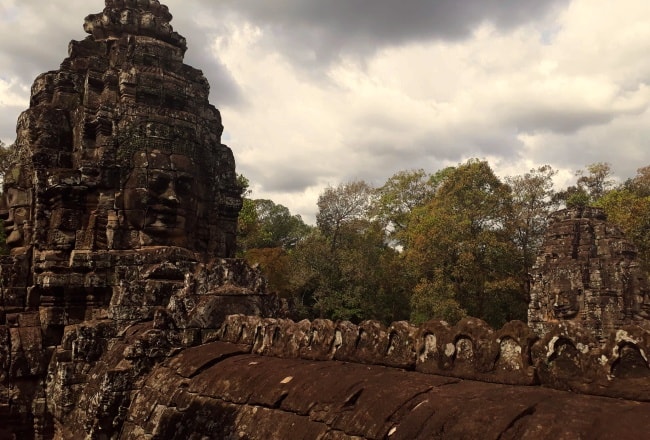
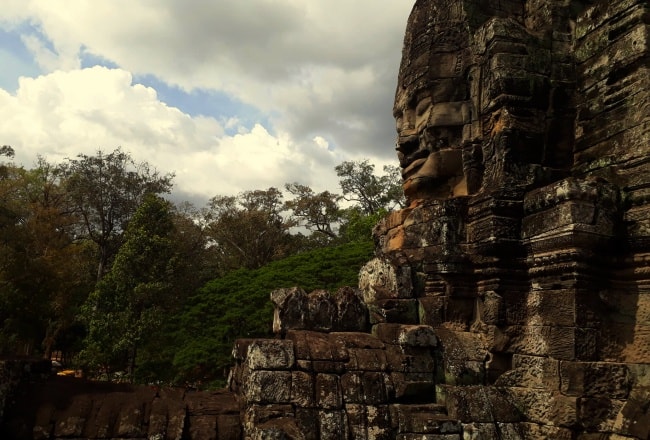
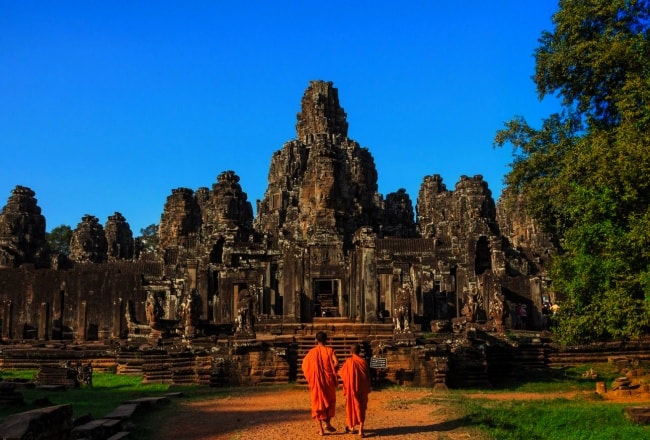
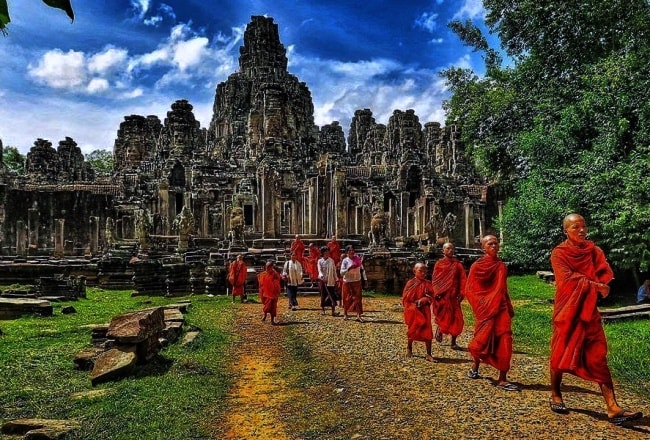
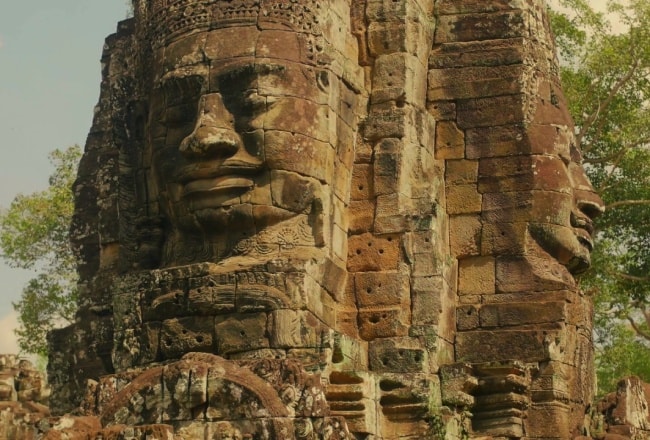
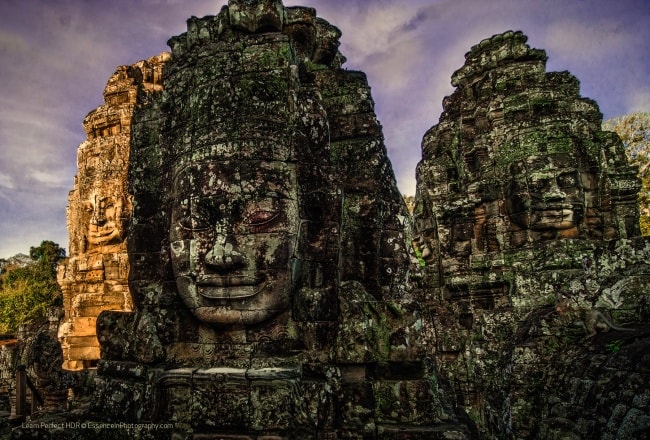
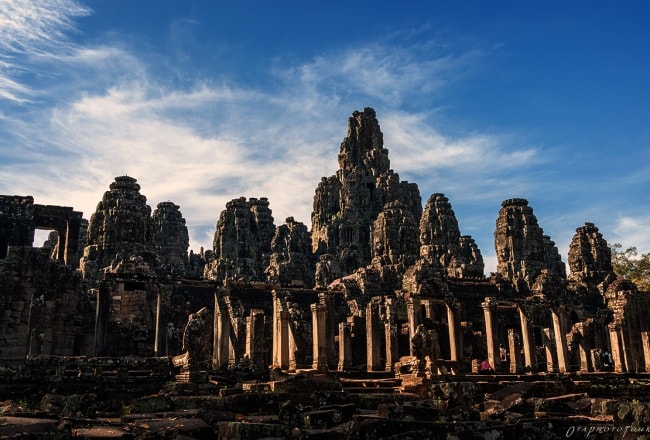
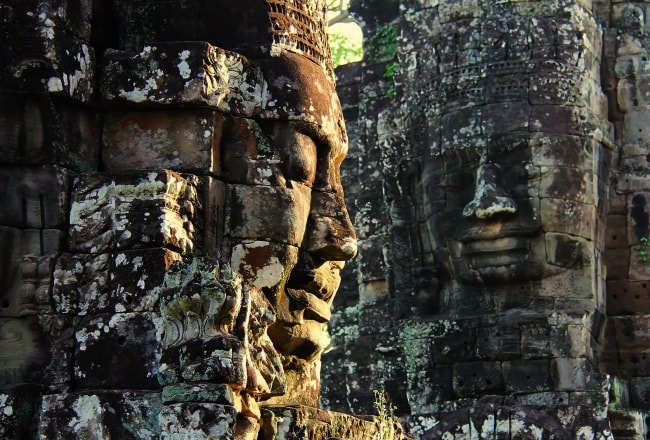
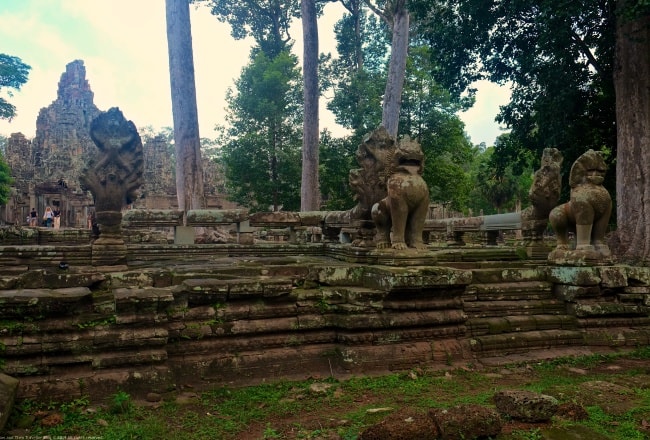

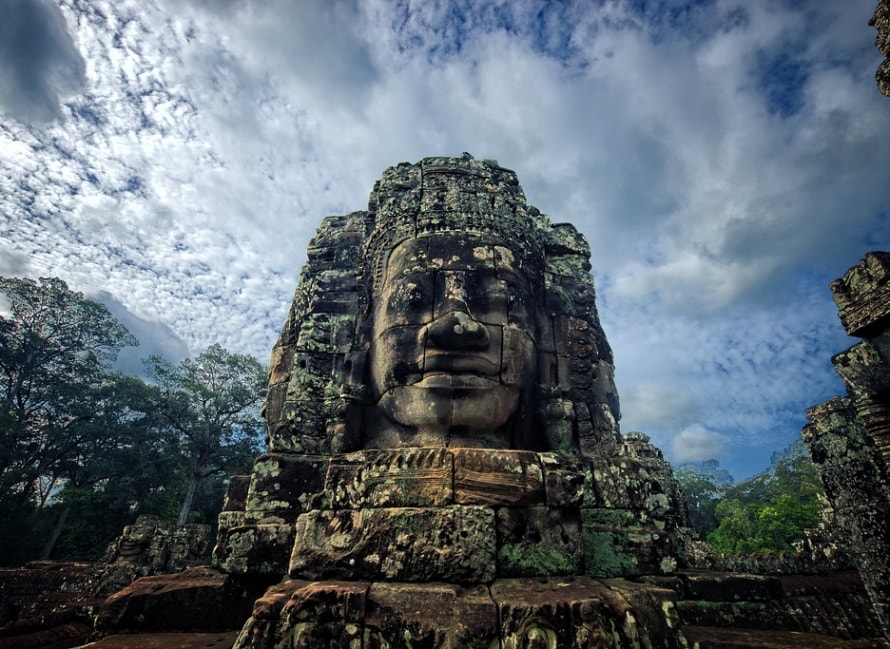
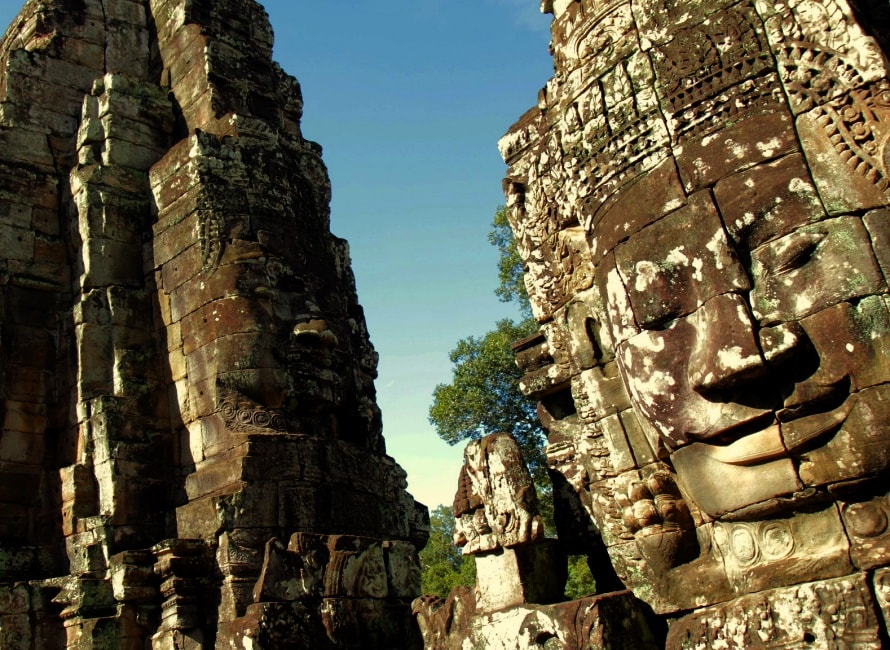
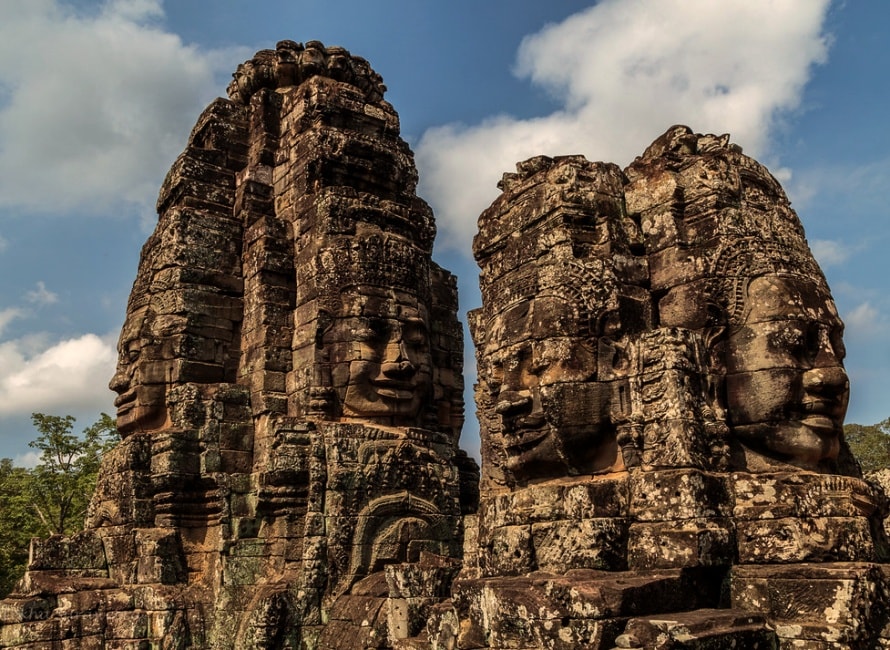
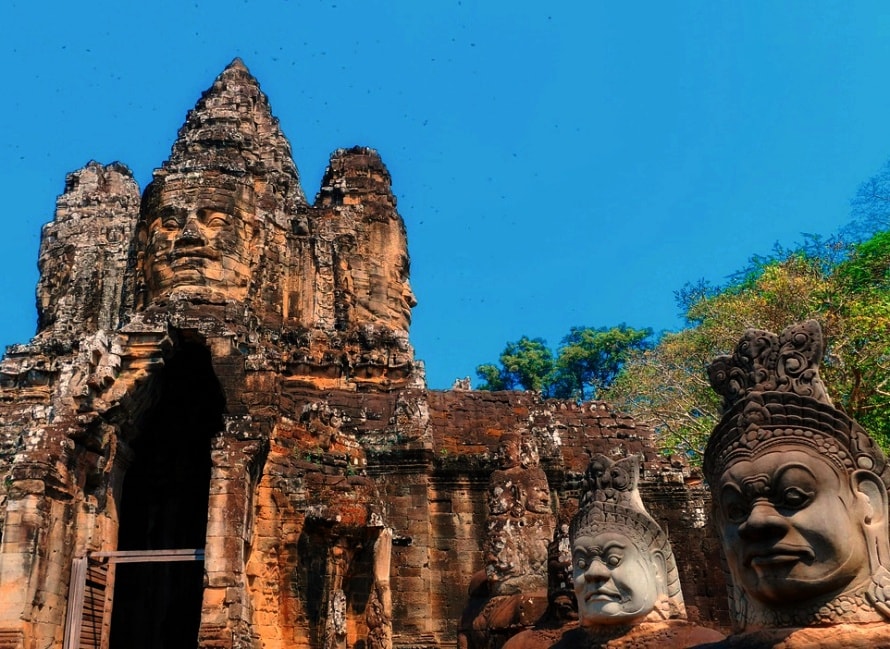
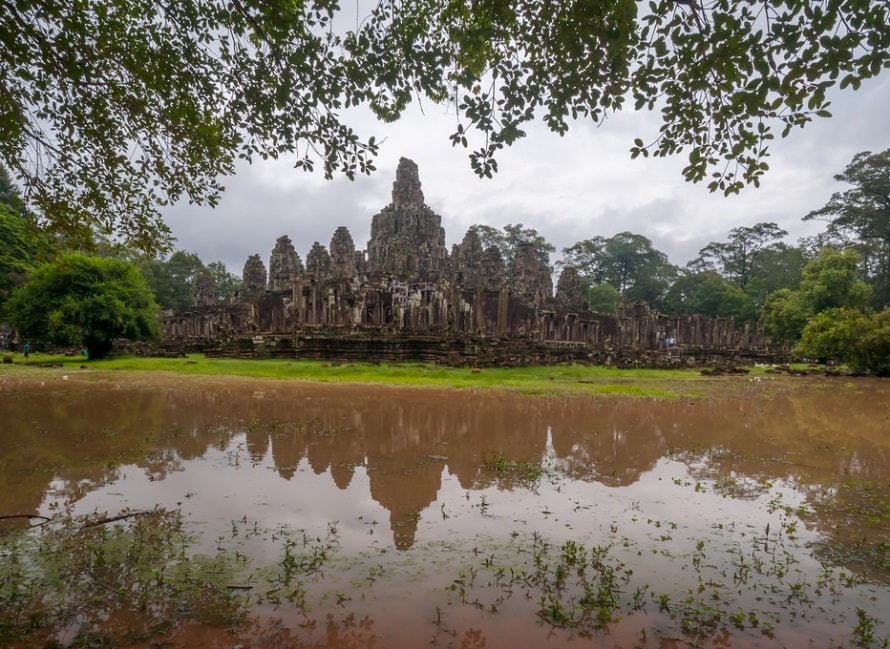
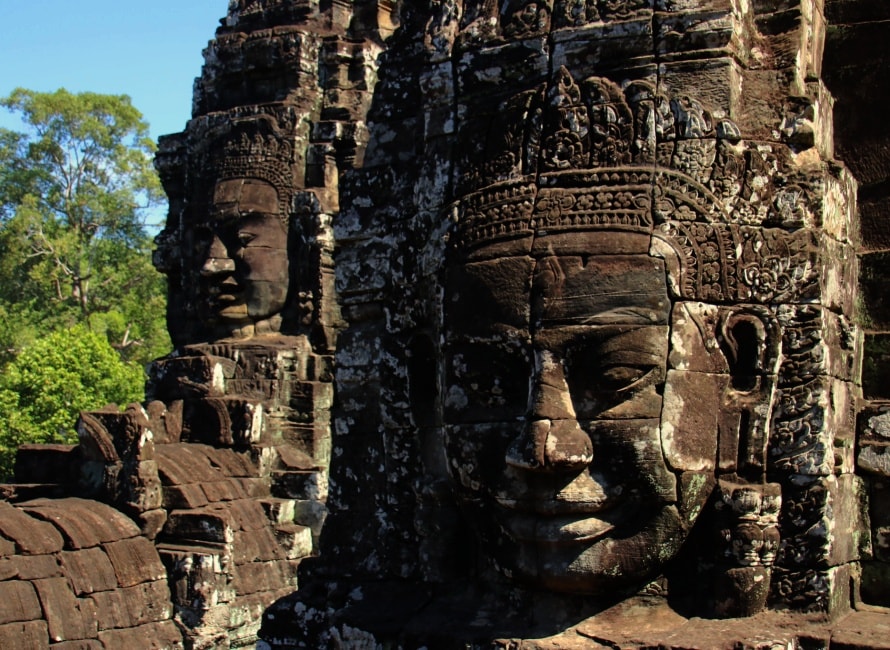
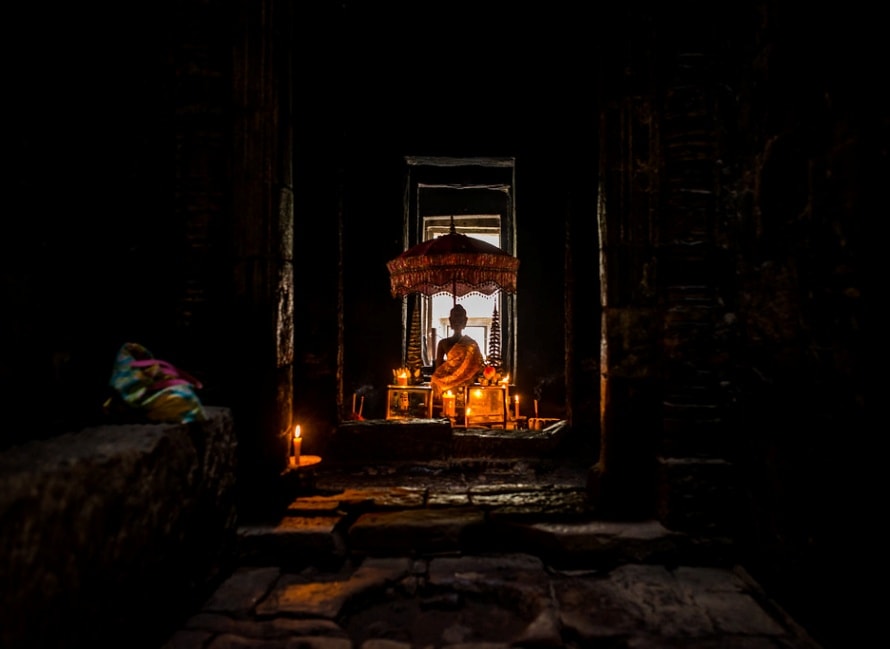
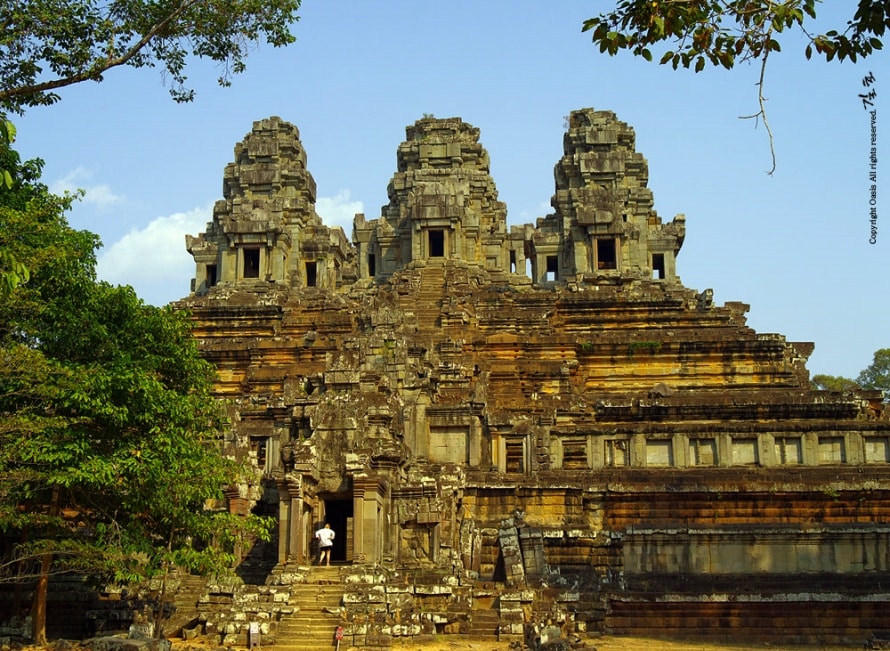
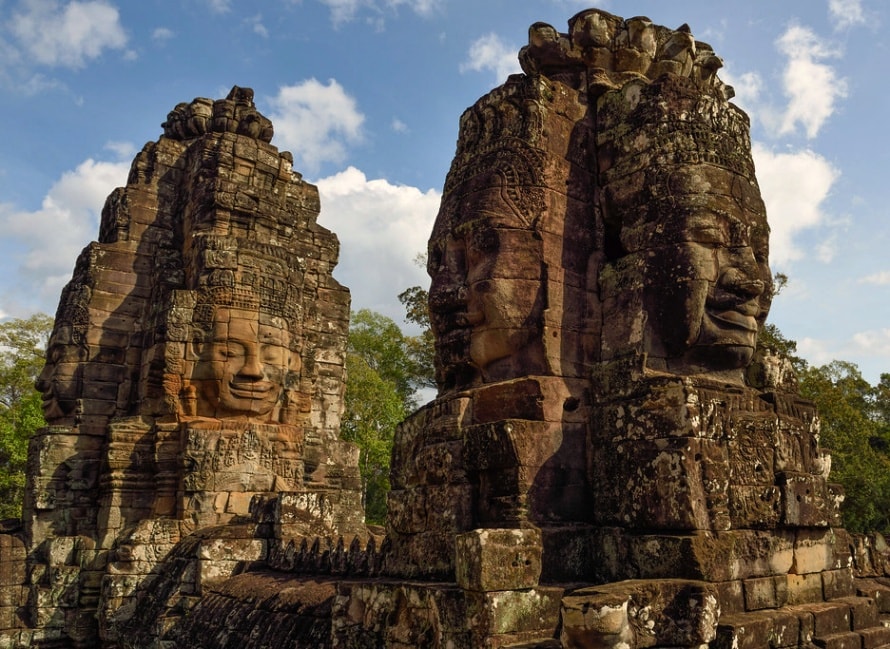




















Jolie LIEMMy name is Jolie, I am a Vietnamese girl growing up in the countryside of Hai Duong, northern Vietnam. Since a little girl, I was always dreaming of exploring the far-away lands, the unseen beauty spots of the world. My dream has been growing bigger and bigger day after day, and I do not miss a chance to make it real. After graduating from the univesity of language in Hanoi, I started the exploration with a travel agency and learning more about travel, especially responsible travel. I love experiencing the different cultures of the different lands and sharing my dream with the whole world. Hope that you love it too!